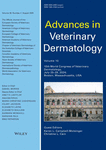Journal list menu
Export Citations
Download PDFs
Issue Information
Editorial
Obituary
Advances in Investigative Dermatology
Supporting Review
Updated insights into the molecular pathogenesis of canine atopic dermatitis
- Pages: 375-384
- First Published: 25 September 2024
Atopic dermatitis (AD) is a common and chronic inflammatory skin disease with frequent relapses The genomics revolution has greatly contributed and revolutionised our knowledge of human AD; understanding the molecular skin fingerprint of AD and associated pathogenic immune pathways has led to preclinical assessments of several novel treatments. Initial studies using microarray analysis to analyse transcriptome (gene expression) changes provided relevant insight on the inflammatory and structural changes occurring at the time of acute or chronic AD skin lesions, or after immunomodulating treatments with drugs ciclosporin and dupilumab, a monoclonal antibody anti-IL4 receptor. The studies revealed that human AD is characterised by the activation of multiple cytokine pathways (predominance of T helper cell [Th]2 with some activation of Th1, Th17 and Th22) as well as dysregulated expression of barrier components in the skin. There are several reports on the expression of different single molecular targets (e.g. interleukin [IL]-13, CCL17 and periostin) in spontaneous cAD. However, significant studies of the transcriptome have been limited to a single microarray study analysing chronic AD skin lesions in dogs. While revealing a large number of genes differentially expressed in cAD skin, the small sample size (n = 13 dogs) and the lack of key epidermal barrier and inflammatory cytokine genes in the microarrays have inhibited discussion towards specific immunological changes. This paper reviews the current literature regarding the molecular mechanisms of spontaneous cAD, including the recent data regarding RNA sequencing, and compares some pathogenic aspects to the previously published data from human AD.
Supporting Original Studies
Characterising the expression of the organic cation transporter OCT3 in cutaneous papillomas of dogs
- Pages: 385-391
- First Published: 02 October 2024
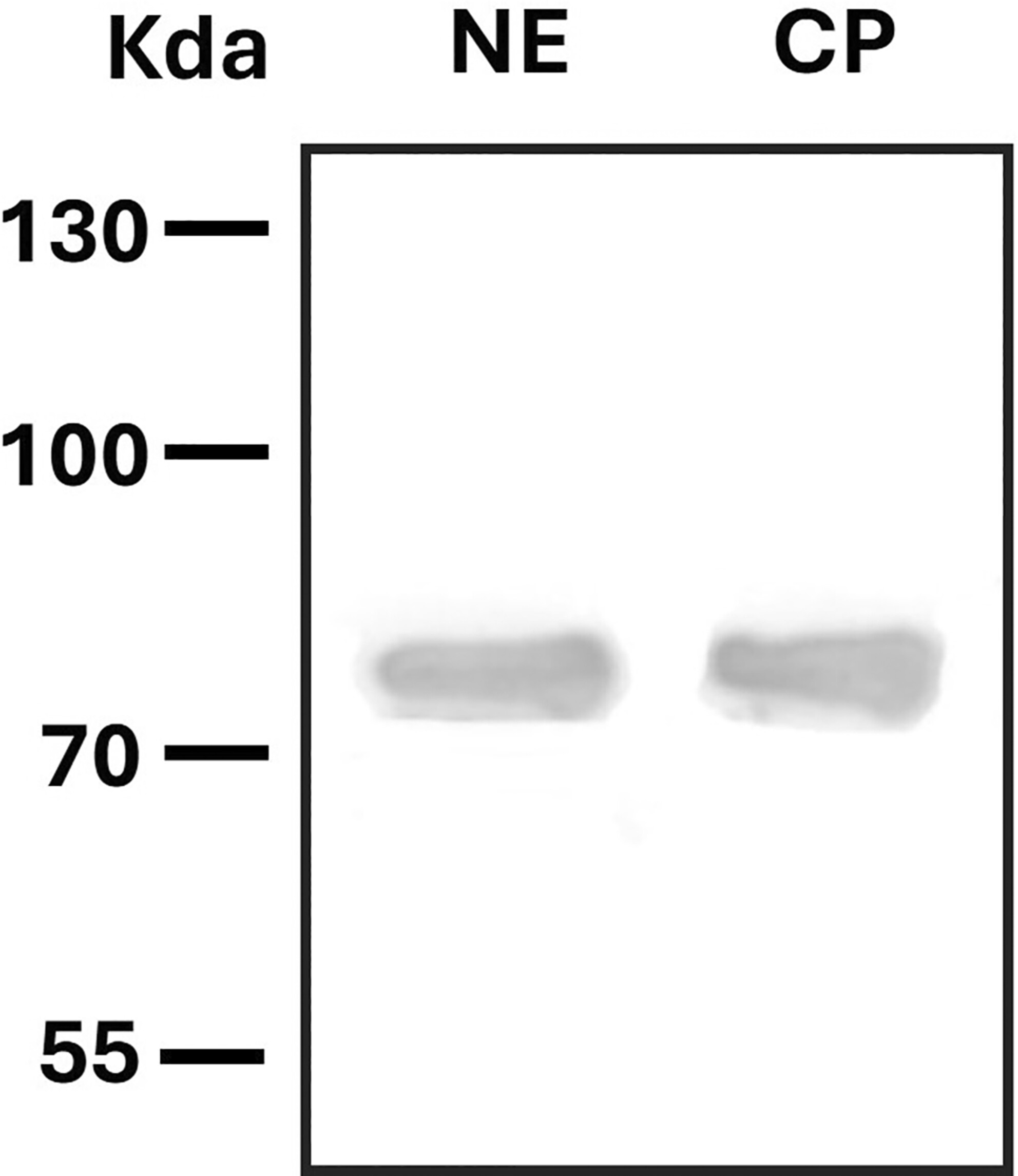
Background – The identification of the activation of the mammalian target of rapamycin (mTOR) signalling pathway as a frequent molecular event in canine cutaneous papillomas (CPs) has provided the rational foundation to explore novel molecular-targeted therapies. Recent evidence indicates that metformin reduces the size of CPs in mice by inhibiting the mTOR signalling pathway. These effects require the expression of the organic cation transporter 3 (OCT3/SLC22A3), a well-known metformin uptake transporter. Hypothesis/Objectives – The aim of the present study was to characterise the expression pattern of the metformin uptake transporter OCT3 in canine samples of CP that have shown activation of the mTOR signalling pathway in order to predict if this hyperplastic epidermal lesion is potentially sensitive to metformin. Conclusions and Clinical Relevance – These results show that canine CPs exhibit the expression of surrogate markers that suggest sensitivity to metformin, such as upregulated OCT3 and pS6 expression. Taken together, these findings provide the rationale for the early assessment of the use of metformin as a mechanism-based therapeutic approach for treating canine patients with persistent or multiple CPs.
Epicutaneous house dust mite (HDM)-induced skin lesions feature early activation of T helper 2 inflammatory and pruritogenic pathways in HDM-nonsensitised dogs
- Pages: 392-400
- First Published: 23 October 2024

Background – Epicutaneously house dust mite-sensitised (HDM-S) healthy dogs are commonly used as canine atopic dermatitis (cAD) models; however, the exact mechanisms of HDM-induced AD immune activation in HDM-S and HDM-nonsensitised (NS) dogs remain unclear. Objectives – To characterise the inflammatory and pruritogenic transcriptome of acute epicutaneous HDM-induced skin lesions at 6 h and 24 h in HDM-NS and HDM-S dogs; untreated skin at 0 h from each dog served as control. Conclusions and Clinical Relevance – Taken together, we establish that epicutaneous HDM patch application induces immune changes in HDM-NS dogs with Th2 dominance and activates several itch-promoting pathways.
Transcriptomic profiling of dorsal root ganglia in atopic and healthy dogs: A comparative RNA sequencing study with implications in cutaneous itch research
- Pages: 401-411
- First Published: 27 January 2025
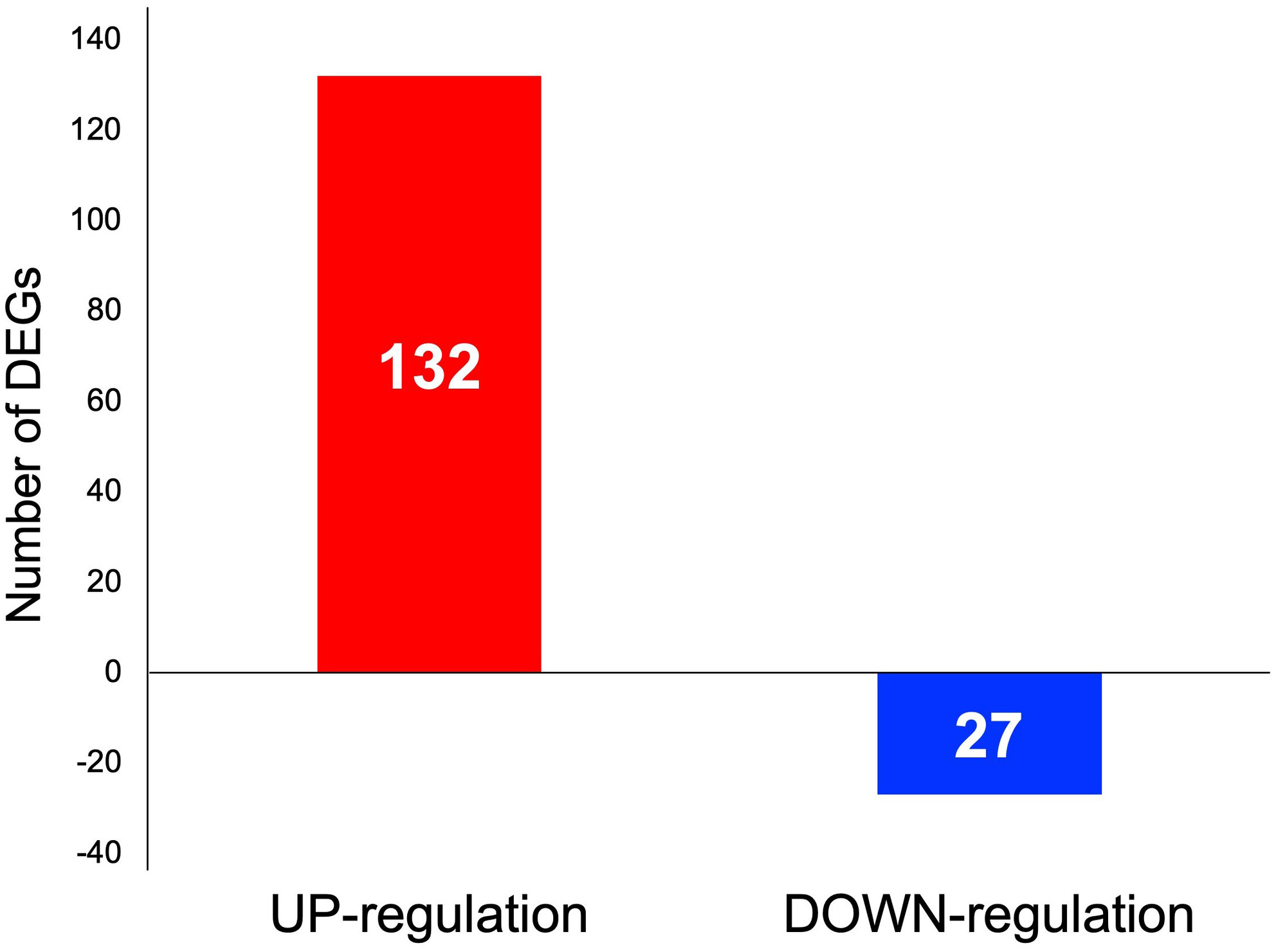
Background – Itch is a common symptom in skin disorders. While the neural pathways of itch transmission from the skin to the brain are well-understood in rodents, the same pathways in dogs remain unclear. The knowledge gap hinders the development of effective treatments for canine itch-related disorders. Hypothesis/Objectives – This study aimed to investigate the differential gene expression in the dorsal root ganglia between healthy and atopic dogs to identify specific molecules potentially involved in itch signalling and neuroinflammation in canine atopic dermatitis (cAD). Conclusions and Clinical Relevance – Our study suggested that dysregulation of neuroinflammatory pathways might play a role in the pathomechanism of canine AD as in humans.
Otology
Supporting Review
A brief historical perspective of otitis externa in dogs
- Pages: 412-416
- First Published: 27 May 2025
Background – The history of otology and otitis externa (OE) goes back to the earliest days of medicine with notations made in early Egyptian writings and evolving to our modern-day textbooks and publications. Conclusions and Clinical Relevance – The history of OE in dogs is closely tied to the history of otology and veterinary dermatology, and introduces us to early and recent researchers and writers in the field of medicine, veterinary medicine and otology.
Supporting Original Studies
Clinical aspects of middle ear tympanokeratoma in dogs diagnosed through advanced imaging, otoendoscopy and histopathological evaluation
- Pages: 417-423
- First Published: 03 January 2025
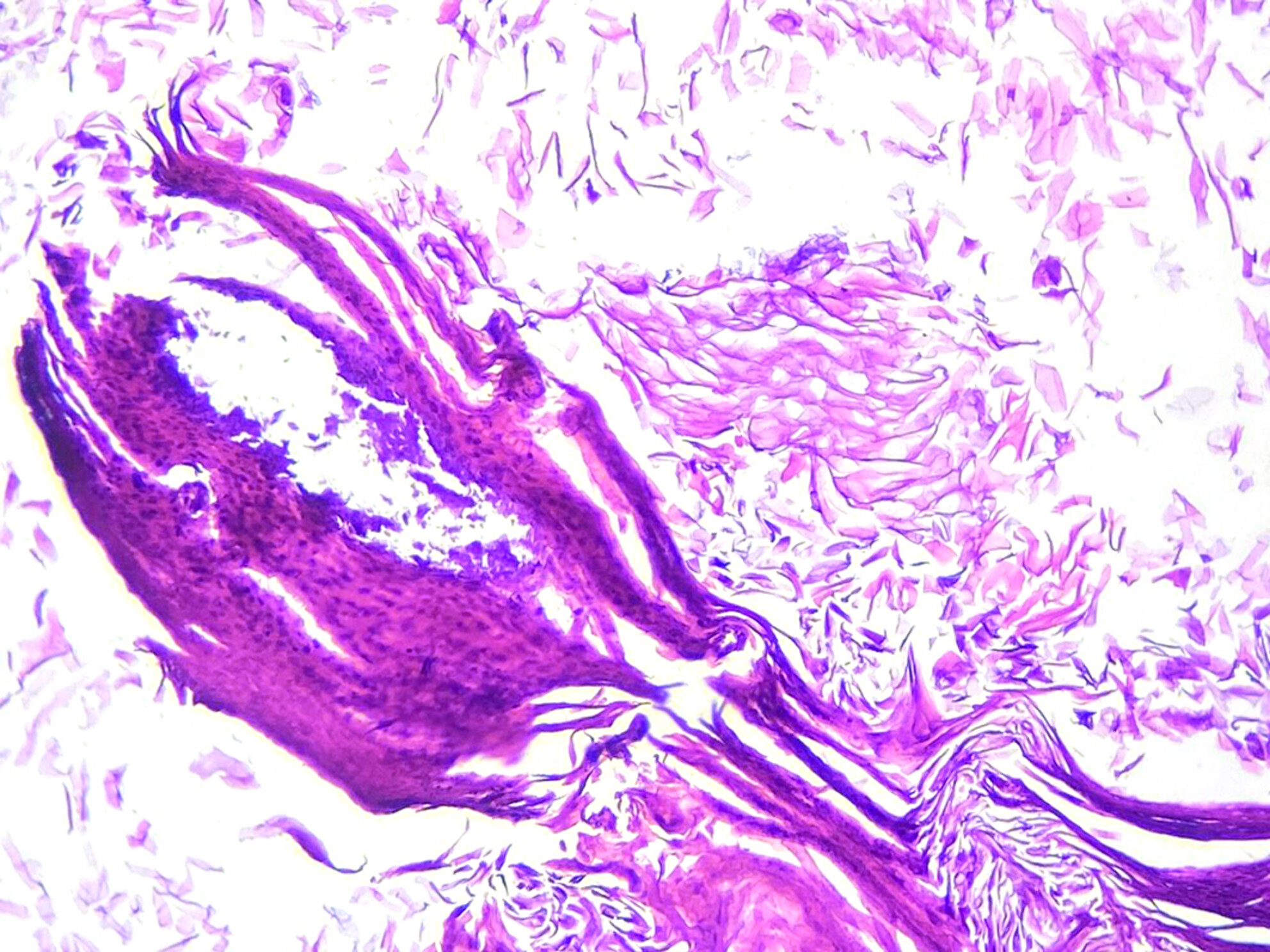
Background – Canine auricular cholesteatoma (more appropriately named tympanokeratoma) is an epidermoid cyst whose aetiopathogenesis remains poorly recognised in veterinary medicine. There are a few reports published, possibly because it may be underdiagnosed. Objectives – To characterise the clinical aspects of dogs with tympanokeratoma, to describe the otoendoscopic, advanced imaging and histopathological findings of tympanokeratoma and to report the best approach to diagnose canine auricular tympanokeratoma in a retrospective study. Conclusions and Clinical Relevance – Tympanokeratoma should be suspected in brachycephalic dogs with otitis externa and peripheral vestibular syndrome, and samples of keratinous material from the middle ear associated with histopathological results may be the best approach for the diagnosis.
Free Communication
Detection of canine external ear canal lesions using artificial intelligence
- Pages: 424-432
- First Published: 03 March 2025
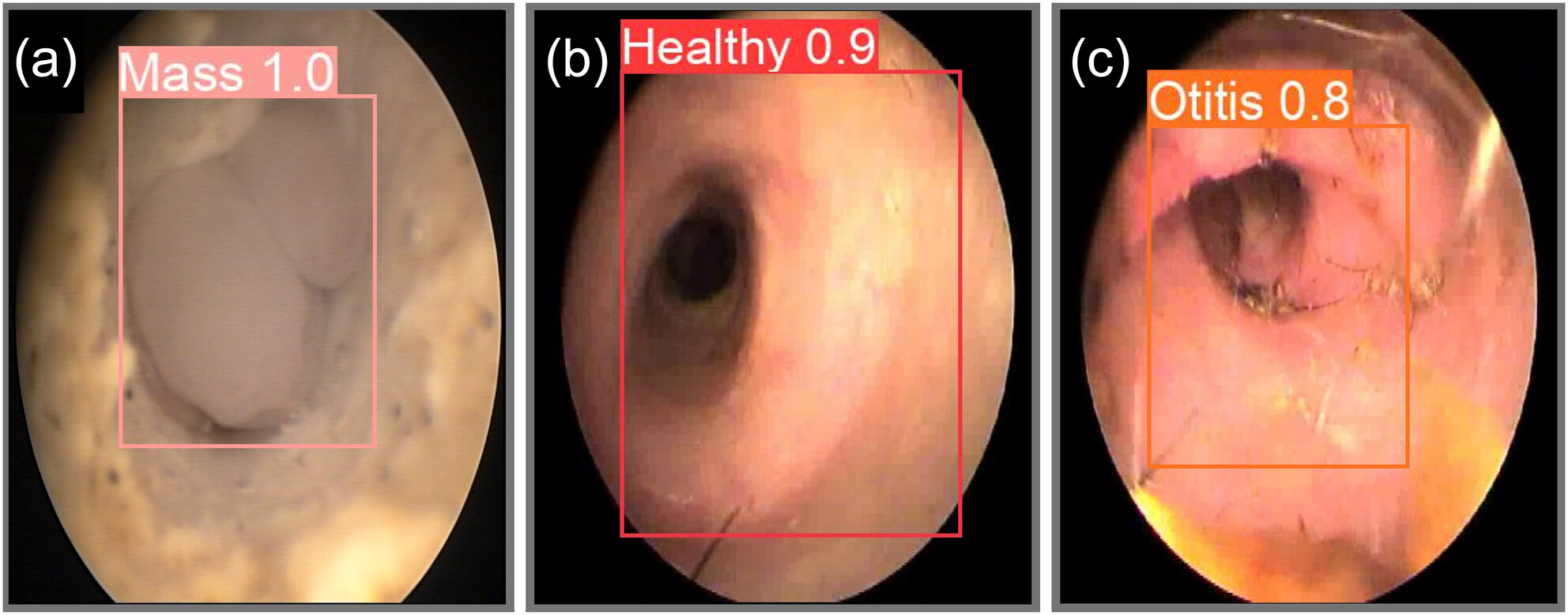
Background – Early and accurate diagnosis of otitis externa is crucial for correct management yet often can be challenging. Artificial intelligence (AI) is a valuable diagnostic tool in human medicine. Currently, no such tool is available in veterinary dermatology/otology. Objectives – As a proof-of-concept, we developed and evaluated a novel YOLOv5 object detection model for identifying healthy ear canals, otitis or masses in the canine ear canal. Conclusions and Clinical Relevance – This novel AI object detection model has the potential for application in the field of veterinary dermatology. An external validation study is needed before clinical deployment.
Allergy and Innovations in Dermatology
Supporting Original Studies
Evaluation of a direct lymphocyte proliferation test for the diagnosis of canine food allergies with delayed reactions after oral food challenge
- Pages: 433-442
- First Published: 21 November 2024
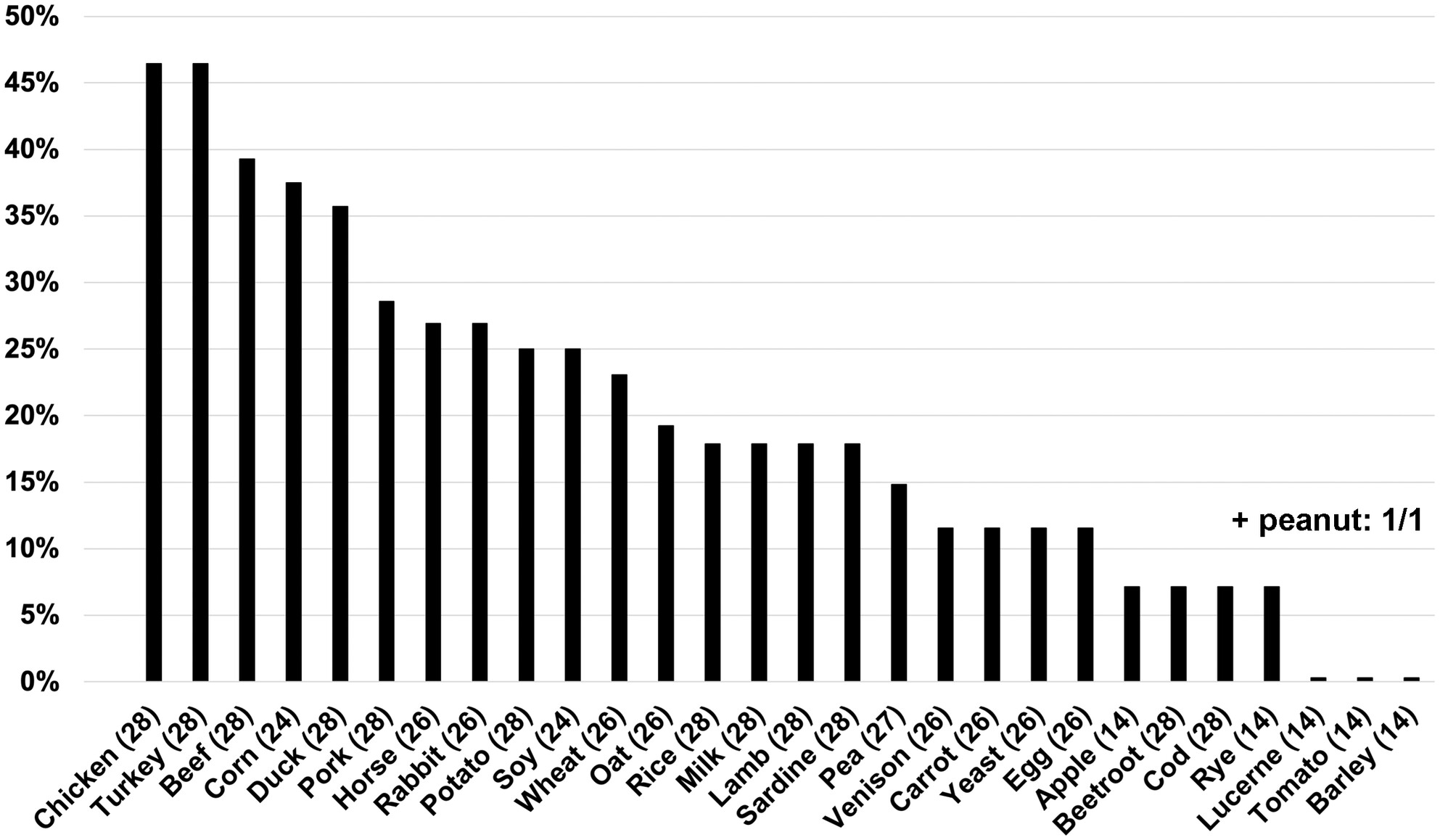
Background – In humans, food allergies (FAs) are divided into those with immunoglobulin (Ig) E-mediated (immediate FA), cell-mediated (delayed FA) or both mechanisms (mixed FA). In dogs, lymphocyte stimulation tests have the highest concordance with oral food challenges (OFCa). Objectives – To report the evaluation of a lymphocyte proliferation test (LPT) in dogs with FA and delayed reactions (≥6 h) after OFC. Conclusions and Clinical Relevance – FAs with delayed reactions after OFC—those suspected of having a cell-mediated mechanism—seem to be the most common type of FA in dogs. The LPT is helpful in identifying such cases.
Immunotherapy using pullulan-conjugated Der f 2 allergen in canine atopic dermatitis: An anti-inflammatory agent-sparing approach
- Pages: 443-452
- First Published: 17 December 2024
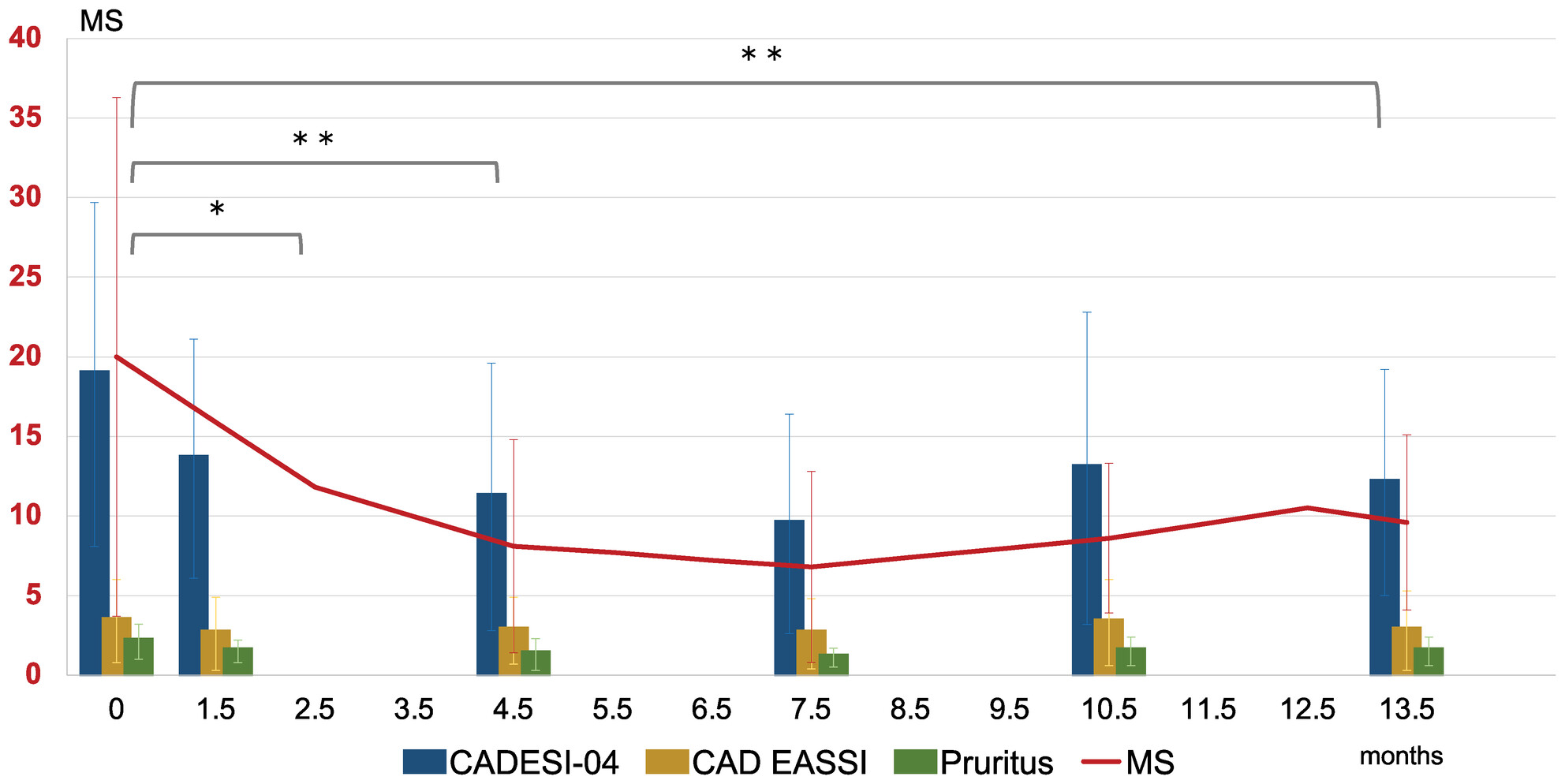
Background – Allergen immunotherapy is used as aetiological treatment for canine atopic dermatitis (cAD). Objective – To assess the anti-inflammatory agent-sparing effect over 1 year of immunotherapy using pullulan-conjugated recombinant Der f 2 (rDf2-P). Conclusions and Clinical Relevance – Der f 2-P immunotherapy can lead to a rapid reduction in anti-inflammatory drug use and serve as an effective proactive therapy for cAD.
Free Communication
Evaluation of filaggrin 2 expression in dogs with atopic dermatitis before and after oclacitinib maleate administration
- Pages: 453-461
- First Published: 05 March 2025

Background – Canine atopic dermatitis (cAD) is a chronic, inflammatory, multifactorial and pruritic disease. The presence of skin barrier impairment (e.g. filaggrin alterations), along with abnormal immune responses, can negatively impact cutaneous barrier function. Objectives – To evaluate the filaggrin 2 (FLG2) expression in atopic dogs before and after the administration of oclacitinib maleate. Conclusions and Clinical Relevance – Oclacitinib maleate could have a positive impact on cutaneous barrier structure, improving FLG2 expression by decreasing inflammation and cutaneous trauma.
Unlocking the potential of lipidomic analysis in canine atopic dermatitis research: Insights from a pilot study
- Pages: 462-473
- First Published: 12 June 2025
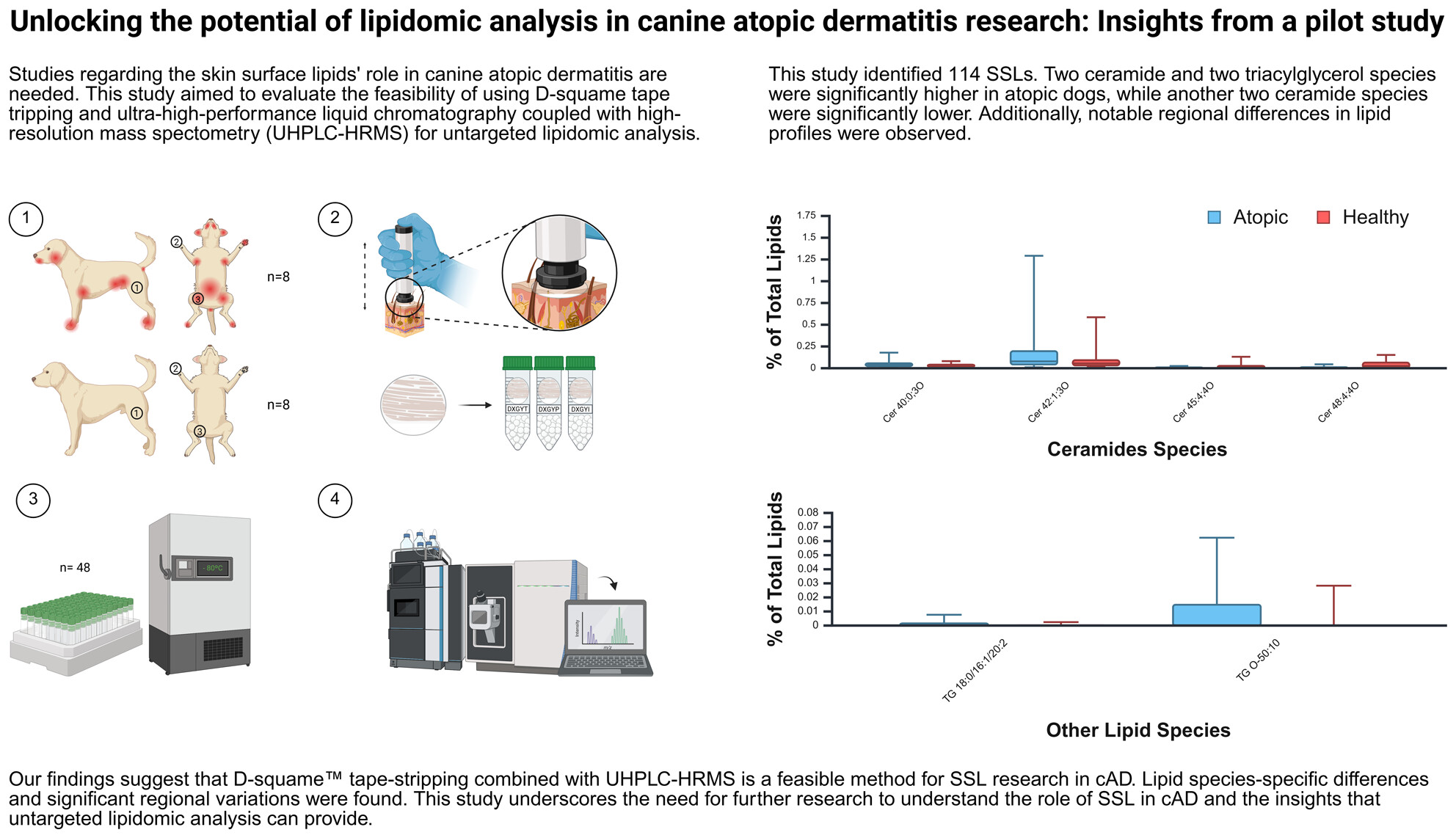
Background – Canine atopic dermatitis (cAD) is a complex skin disease characterised by barrier dysfunction. Studies regarding the role of skin surface lipids (SSL) in cAD are needed. Objectives/Hypothesis – Evaluate the feasibility of using D-squame tape-stripping for SSL collection and ultra-high-performance liquid chromatography coupled with high-resolution mass spectrometry (UHPLC-HRMS) for untargeted lipidomic analysis. A secondary objective was to identify significant differences in SSL between atopic and healthy dogs and between different body sites. Conclusions and Clinical Relevance – Our findings suggest that D-squame tape-stripping combined with UHPLC-HRMS is a feasible method for SSL research in cAD. Lipid species-specific differences and significant regional variations were found, emphasising the importance of considering body sites in future studies. This study underscores the need for further research to understand the role of SSL in cAD and the insights that untargeted lipidomic analysis can provide.
Skin Biology in Health and Disease
Supporting Original Studies
A novel approach for feline sporotrichosis pathogen detection based on loop-mediated isothermal amplification
- Pages: 474-484
- First Published: 21 April 2025

Background – Sporotrichosis is a chronic, mycotic infection caused by fungi of the genus Sporothrix. Zoonotic sporotrichosis occurs mainly through S. brasiliensis transmission, resulting from the organism's traumatic introduction via scratches or bites, or contact with exudate from contaminated cats. The loop-mediated isothermal amplification (LAMP) assay is a viable molecular alternative for detecting Sporothrix in veterinary low-resource settings. Hypothesis/Objectives – To develop a LAMP method for Sporothrix identification using fungal isolates and clinical samples of domestic cats (Felis catus). Conclusions and Clinical Relevance – These findings support a simple and quick LAMP-based screening tool for detecting Sporothrix in isolated and clinical samples. This accessible test can aid in disease management when standard culture analysis is unavailable or impractical.
Antimicrobial activity of Lactobacillus casei on Staphylococcus pseudintermedius isolates
- Pages: 485-493
- First Published: 27 January 2025
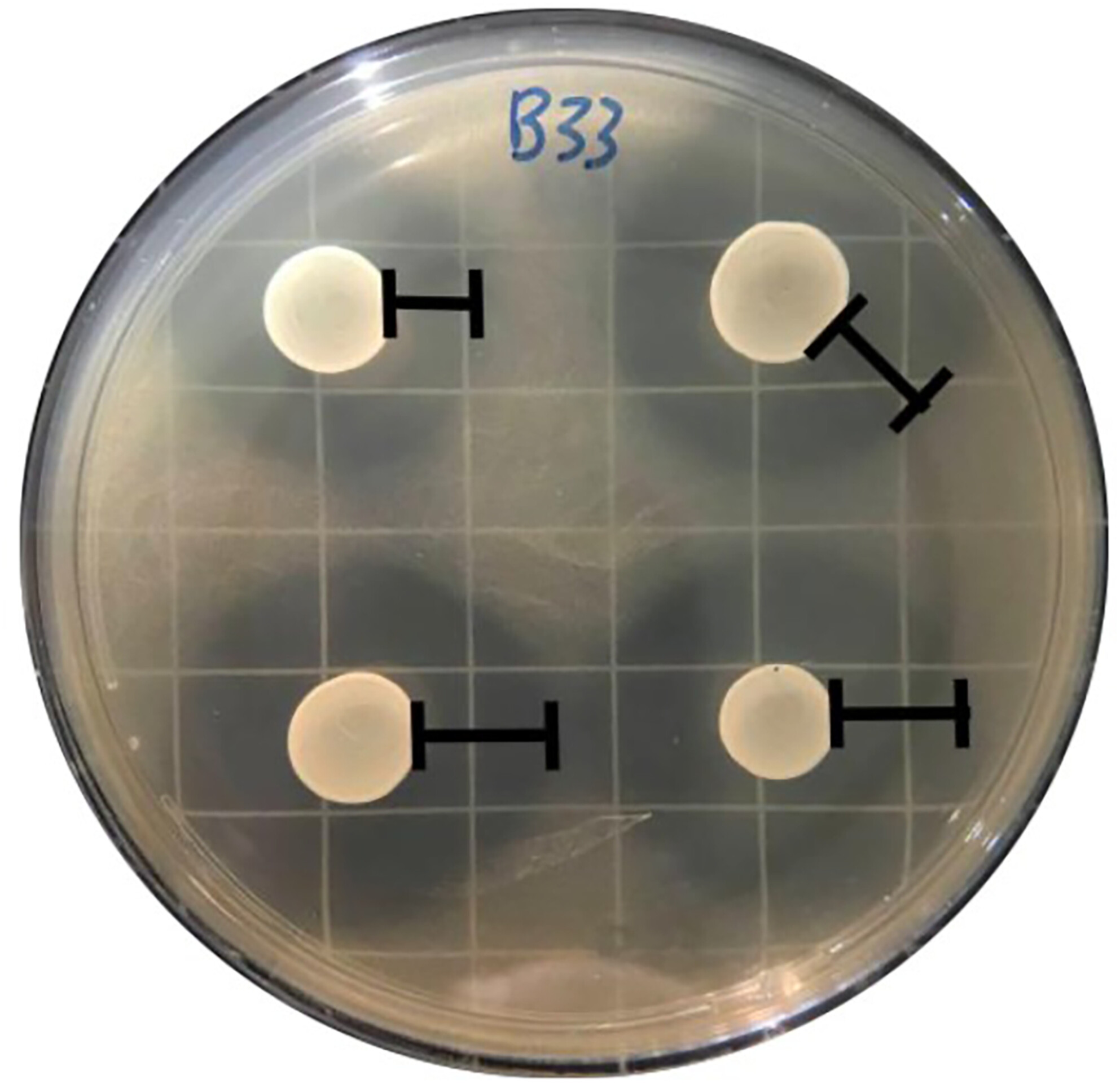
Background – Antimicrobial resistance is increasing each year. For example, in 2019, it was directly responsible for an estimated >1 million deaths. Additionally, the development of new drugs is much slower, generating enormous concerns about responses to infection in the future health scenario. Therefore, probiotics have emerged as an alternative to antibiotics. Objectives – This study aimed to isolate and identify a Lactobacillus casei from healthy canine skin and investigate its antimicrobial effect on isolates of Staphylococcus pseudintermedius originating from dogs with pyoderma. Conclusions and Clinical Relevance – The study indicates that using commensal bacteria from canine skin, specifically L. casei, to control bacterial infections caused by S. pseudintermedius can be a promising complementary or alternative therapy to antibiotics relevant to animal and human health.
Erythritol alters the expression of genes related to sugar and arginine metabolisms and suppresses the growth of Staphylococcus hyicus
- Pages: 494-505
- First Published: 17 June 2025
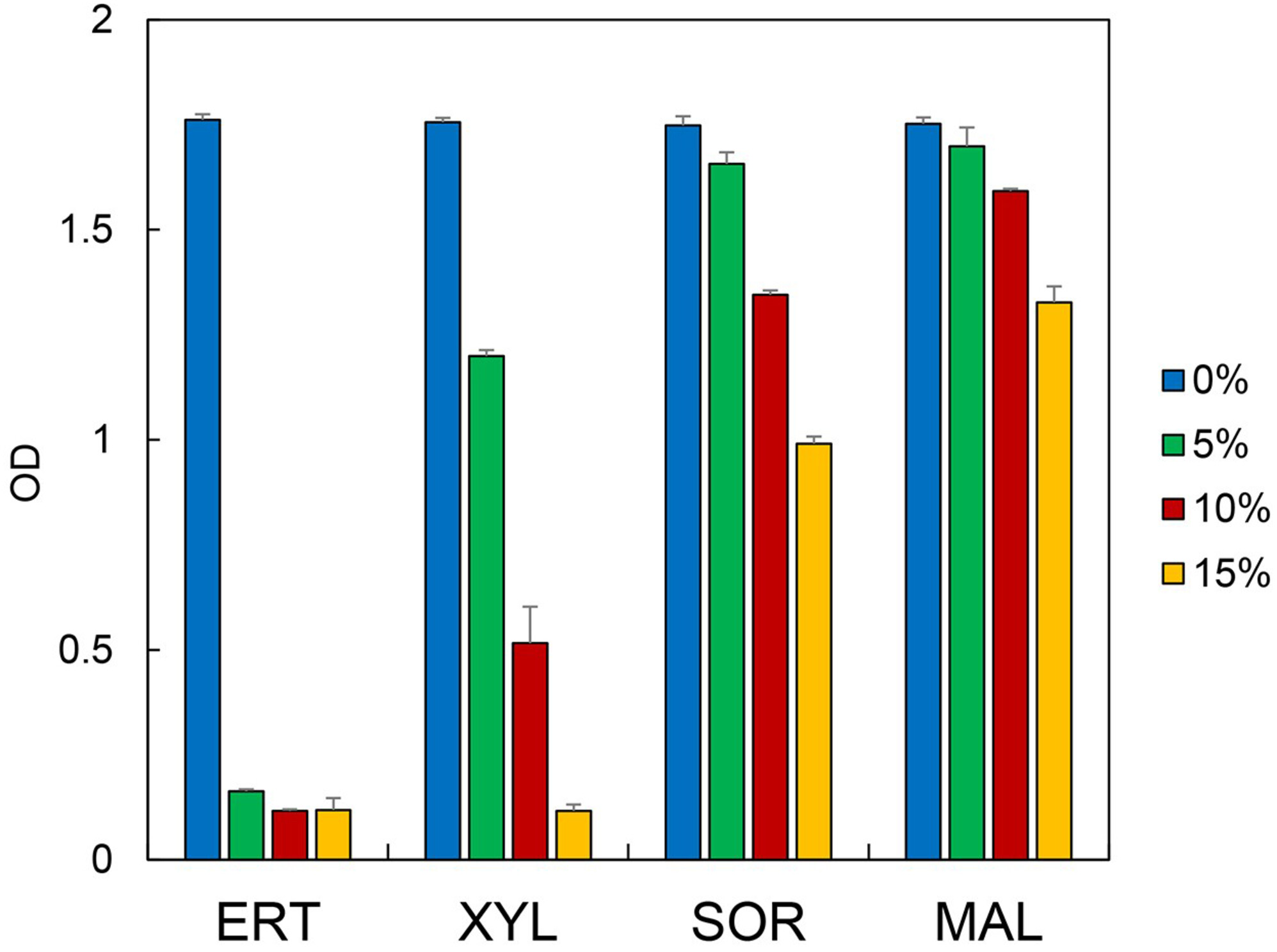
Background – Erythritol, a sugar alcohol, has been reported to suppress the in vitro growth of Staphylococcus pseudintermedius and Staphylococcus coagulans. Objectives – To determine whether erythritol suppresses the growth of Staphylococcus hyicus, a major pathogen causing porcine exudative epidermitis, and to investigate the molecular mechanisms involved in erythritol-induced S. hyicus growth suppression. Conclusions and Clinical Relevance – Erythritol suppresses the in vitro growth of S. hyicus by inhibiting intracellular sugar and arginine metabolisms under aerobic and anaerobic conditions, respectively.
The cutaneous microbiota and Nannizziomycosis in bearded dragons (Pogona vitticeps): Associations between infectious Nannizziopsis species and common bacterial pathogens
- Pages: 506-515
- First Published: 27 May 2025
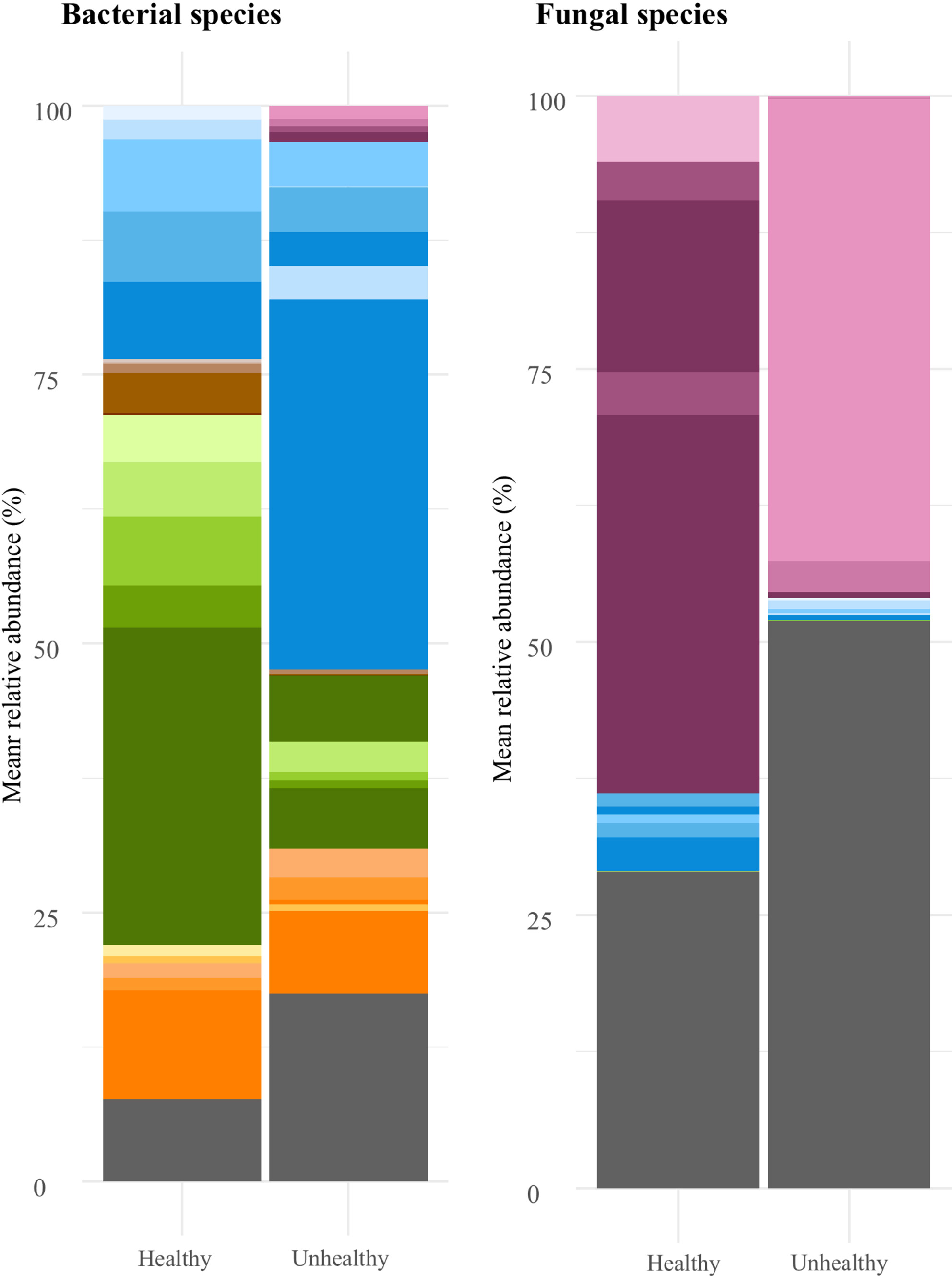
In bearded dragons (Pogona vitticeps), nannizziomycosis can cause skin lesions, ulceration and lethargy. Formally known as yellow fungal disease (YFD), nannizziomycosis has traditionally been attributed to various Nannizziopsis spp. identified via culture and referred to as Chrysosporium anamorph of Nannizziopsis (CANV). However, Nannizziopsis presence does not always lead to nannizziomycosis. Instead, this disease may be caused by multiple pathogens or interactions between microbes (known as the cross-kingdom effect). Using next-generation sequencing (NGS), the bacterial and fungal microbiota of 31 bearded dragons with suspect nannizziomycosis (unhealthy group) and 20 healthy bearded dragons (healthy group) were analysed. One unidentified species within the Nannizziopsis genus (Nannizziopsis sp.) was included in a co-occurrence analysis between 877 bacterial and 78 fungal species in the unhealthy group. Forty-one positive co-occurrences with Nannizziopsis spp. were seen, including Salmonella enterica (p = 0.001), an unidentified species within the Clostridiales order (p < 0.001) and a fungal species from the Cladosporium genus (p = 0.0261). Forty-nine negative interactions with Nannizziopsis spp. were seen, including Bifidobacterium adolescentis (p = 0.0478) and Corynebacterium durum (p = 0.0478). These findings suggest that commensal microbes may change in response to counteract Nannizziopsis, while pathogenic microbes may help facilitate it.
Immune-Mediated Skin Disease
ISVD Workshop - Case Report
Uveodermatological syndrome associated with alopecia areata in a one-year-old female spayed Cavalier King Charles Spaniel dog
- Pages: 516-520
- First Published: 02 October 2024
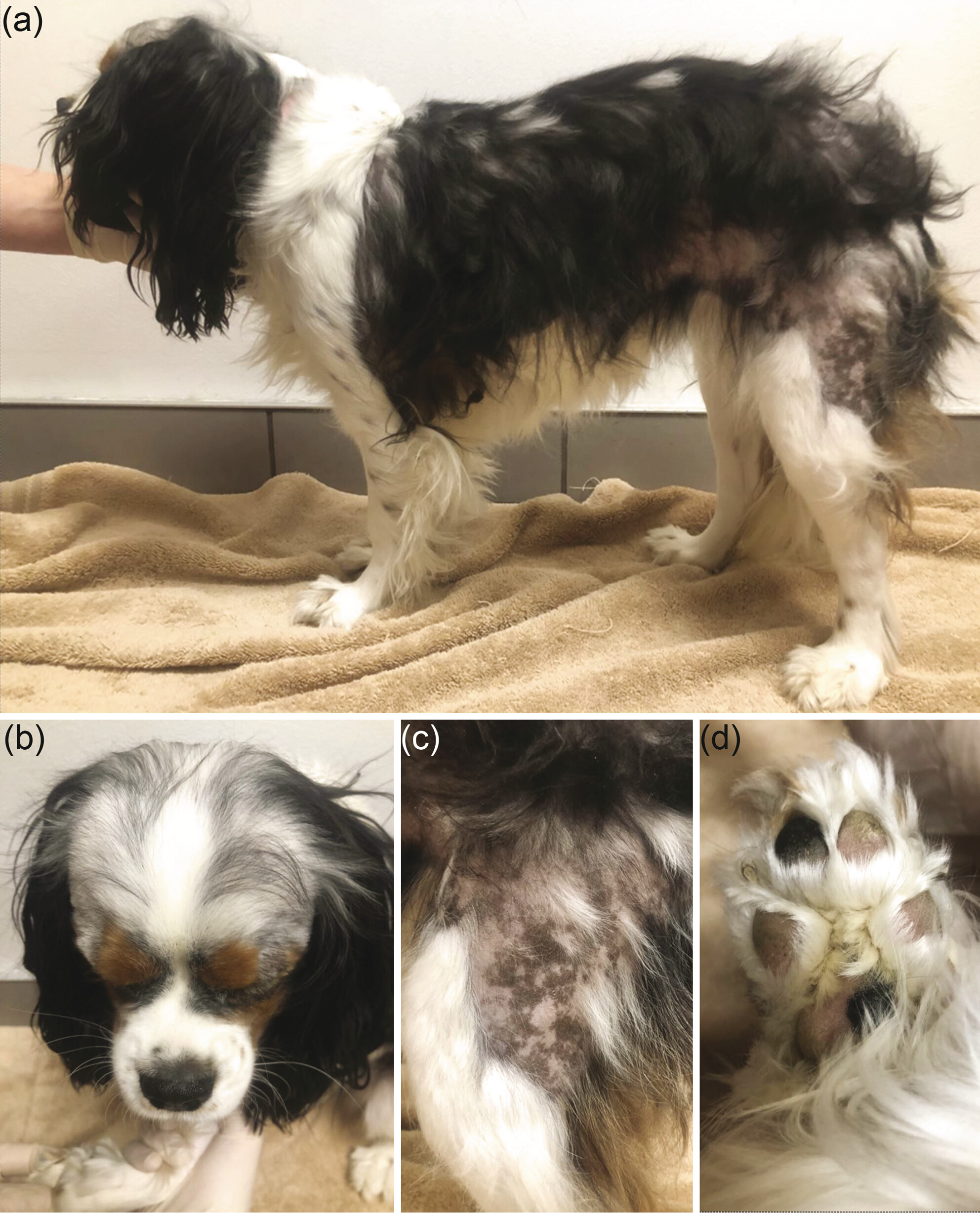
Uveodermatological syndrome and alopecia areata are autoimmune disorders causing ocular and dermatological inflammation and alopecia, respectively, in dogs. This is the first report to document concurrent development of the two diseases in a dog, as has been reported in human patients. Clinical presentation and histopathological diagnosis, treatment and clinical follow-up are described.




